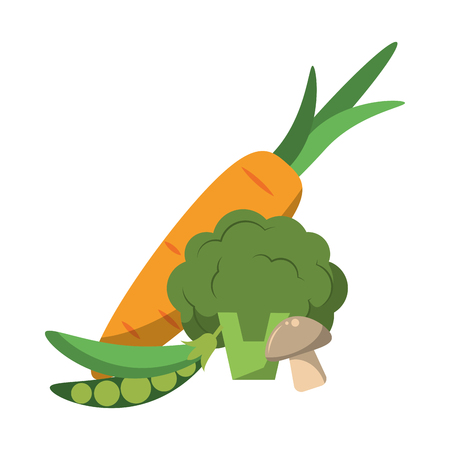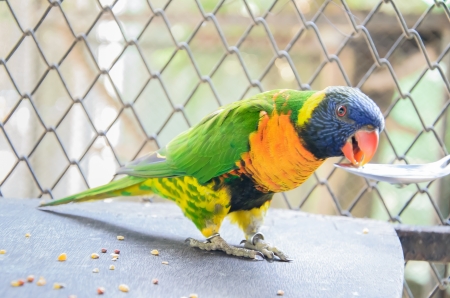Understanding Indian Birds’ Dietary Needs
When it comes to enhancing your pet bird’s diet in India, understanding their unique dietary needs is crucial. Indian households commonly keep a variety of birds such as budgerigars (budgies), lovebirds, cockatiels, African greys, and Indian Ringneck Parakeets. Each of these birds has specific preferences and nutritional requirements shaped by their natural habitats and the Indian climate. For instance, Indian Ringnecks thrive on fresh fruits like guava and mangoes, which are readily available in local markets, while budgies benefit from leafy greens such as spinach and coriander leaves. The hot and humid weather in many regions of India means that birds may require more water-rich fruits and vegetables to stay hydrated and maintain optimal health. Additionally, some native breeds are adapted to local produce like papaya, pumpkin, and drumstick leaves, making these an excellent choice for daily feeding. By tailoring your bird’s diet to include a diverse range of regionally sourced fruits and vegetables, you not only support their nutritional needs but also contribute to their overall well-being in the Indian environment.
Local Fruits & Vegetables Safe for Birds
When it comes to adding fruits and vegetables to your bird’s diet in India, it is important to choose ingredients that are both healthy and locally available. Indian markets are filled with a wide variety of affordable options that can provide essential nutrients to your feathered companions. Here is a list and review of some common Indian fruits and vegetables that are safe for birds:
Top Indian Fruits for Birds
| Fruit | Benefits | How to Serve |
|---|---|---|
| Guava (Amrood) | High in Vitamin C, fibre; good for immunity. | Wash thoroughly, remove seeds, cut into small pieces. |
| Papaya (Papita) | Rich in Vitamin A, aids digestion. | Peeled, deseeded, cut into cubes. |
| Mango (Aam) | Contains antioxidants, vitamins; seasonal treat. | Peeled and cut; offer in moderation due to high sugar content. |
| Banana (Kela) | Easily digestible source of energy and potassium. | Sliced or mashed; serve in small quantities. |
Top Indian Vegetables for Birds
| Vegetable | Benefits | How to Serve |
|---|---|---|
| Bottle Gourd (Lauki/Doodhi) | Hydrating, low-calorie, supports digestion. | Peeled, steamed, and diced. |
| Spinach (Palak) | Iron-rich leafy green; boosts overall health. | Fresh leaves washed properly, chopped finely; serve in moderation due to oxalates. |
| Cucumber (Kheera) | Cools the body, provides hydration. | Peeled and sliced thinly. |
| Carrot (Gajar) | Source of beta-carotene and vitamins; promotes eye health. | Peeled, grated or cut into small pieces. |
Important Tips:
- Avoid fruits like avocado and vegetables like onion and garlic as they are toxic to birds.
- Always wash all produce thoroughly to remove pesticides and chemicals before serving them to your bird.
- Introduce new foods slowly and observe your bird’s reaction to avoid digestive upsets.
Cultural Note:
The above-listed fruits and vegetables are commonly found across India in local sabzi mandis and fruit stalls. They are affordable for most households and align well with the Indian dietary context—making it easy for pet parents to provide a balanced and enriching diet for their birds without any hassle.

3. Creative Ways to Introduce Produce
Introducing new fruits and vegetables into your bird’s diet can be a challenge, especially if your feathered friend is picky or used to a seed-based routine. However, with a few practical tips inspired by Indian households, you can make this transition smooth, fun, and almost waste-free.
Start Small with Familiar Flavours
Begin by offering tiny pieces of familiar local produce like banana, guava, or papaya. Birds in India often respond well to these because they are naturally sweet and widely available. Place a small piece next to their regular food so they get used to the new smell and colour before tasting.
Mix with Favourite Foods
A classic Indian trick is to mix finely chopped vegetables like carrots or spinach into their usual millet or bajra mix. Start with just a pinch so the change isn’t overwhelming. Gradually increase the amount as your bird becomes more accepting.
Hang Fruits for Foraging Fun
Take cues from Indian street vendors who hang fruits for display—do the same in your bird’s cage! Use safe string or stainless-steel skewers to hang slices of apple, cucumber, or even tender coconut inside the cage. This encourages natural foraging behaviour and stimulates curiosity, making mealtime interactive.
Create Colourful Platters
Birds are attracted to bright colours. Prepare a thali-style plate with small amounts of different coloured fruits and vegetables: beetroot, mango, pumpkin, and green peas work well. Rotate the items daily so your bird gets variety without feeling overwhelmed.
Utilise Leftover Veggies & Seasonal Offerings
If you’re preparing sabzi or dal at home, set aside some raw carrot shavings or spinach leaves before cooking. This minimises kitchen waste and ensures your bird gets fresh ingredients every day. Also, take advantage of seasonal Indian produce—offer watermelon in summer or orange segments in winter for both nutrition and hydration.
Gradual Introduction & Observation
Add only one new item at a time and observe your bird’s reaction over several days. If they ignore it initially, don’t give up—sometimes it takes multiple exposures for birds to accept something new. Remove uneaten produce after a couple of hours to keep the cage clean and avoid spoilage.
By incorporating these creative and practical methods rooted in Indian culture, you can successfully enhance your bird’s diet with minimal fuss and waste.
4. Preparing Fruits & Vegetables Indian-Style
Adding fresh fruits and vegetables to your bird’s diet in India is not just about what you choose, but how you prepare them. Indian kitchens are well-equipped with tools like chakla-belan (rolling board and pin), knives, peelers, and traditional steel thalis which can make preparation easy and hygienic. Here’s how to get it right for your feathered friend:
Washing, Peeling, and Cutting: Best Practices
- Washing: Always wash fruits and vegetables thoroughly under running water to remove pesticides and dust. You can soak them for a few minutes in a bowl with a pinch of salt or turmeric – both are natural cleansers commonly used in Indian homes.
- Peeling: Use a stainless steel peeler or knife to remove skins that may be tough or contain residues. For soft-skinned items like cucumber or apple, peeling is optional if you trust the source.
- Cutting: Use a sharp knife or kitchen scissors (common in Indian households) to cut fruits and veggies into small, bite-sized pieces suitable for your bird’s beak size. A chakla can be used as a safe chopping surface.
Indian Kitchen Tools for Bird-Safe Preparation
| Tool | Purpose |
|---|---|
| Chakla-Belan | Rolling and gentle mashing of soft vegetables/fruits |
| Peeler | Easily removes tough or waxy skins |
| Kitchen Scissors | Cuts leafy greens or herbs into safe sizes |
| Steel Thali/Plate | Keeps chopped items clean and separated |
| Bowl with Salt/Turmeric Water | Cleanses produce naturally before serving |
Do’s and Don’ts: Spices & Typical Indian Ingredients
- Do:
- Stick to plain, raw fruits and vegetables without any added masalas, spices, or oil.
- If you want to add an Indian touch, use fresh coriander leaves (dhaniya) or mint (pudina) in moderation—these are safe and aromatic for most birds.
- Always check for seeds or pits in fruits like mangoes or papayas; these should be removed as they can be toxic.
- Don’t:
- Avoid all forms of salt, chilli powder, garam masala, turmeric, hing (asafoetida), and other strong spices. Birds’ digestive systems are sensitive and cannot handle these typical Indian flavours.
- No cooked sabzis: Do not feed birds leftovers from your own meals as these often contain oil, spices, salt, and onions/garlic—all unsafe for avian diets.
- No pickles or chutneys—high salt and spices make them dangerous for birds.
Quick Reference Table: What to Use & Avoid from Your Kitchen
| Safe to Use | Avoid Completely |
|---|---|
| Coriander leaves Mint leaves Washed raw fruits Washed raw vegetables Boiled plain sweet potato/potato (no salt) |
Sambhar powder Chilli powder Salt Garam masala Pickles Onion/Garlic Fried foods Cooked curries/sabzi |
A Little Extra Care Goes a Long Way!
Your bird will thrive when you blend the goodness of Indian produce with bird-safe preparation techniques. Simple steps like proper washing, careful chopping, and avoiding traditional spices ensure every meal is healthy and enjoyable for your feathered companion.
5. Seasonal Feeding Guidelines
When it comes to adding fruits and vegetables to your bird’s diet in India, following seasonal feeding guidelines can make a big difference to your pet’s health and happiness. India has a diverse climate, with distinct monsoon, summer, and winter seasons, each affecting the availability and suitability of certain produce. Here’s how you can make the best choices for your feathered friends throughout the year.
Summer Choices: Beat the Heat
Indian summers can be extremely hot, so opt for juicy and hydrating fruits like watermelon (tarbooz), muskmelon (kharbuja), cucumber (kheera), and papaya. These help keep birds cool and hydrated. Avoid citrus fruits during peak heat as they may cause stomach upset. Also, steer clear of overripe or fermenting produce which spoils quickly in high temperatures.
Monsoon Caution: Stay Safe from Spoilage
The rainy season brings humidity and higher risks of bacterial growth. Stick to hard-skinned fruits such as apples, pears, and guavas that are less likely to spoil rapidly. Wash all produce thoroughly to remove pesticides and pathogens. Avoid leafy greens and soft berries during this time as they spoil fast and could cause digestive issues.
Winter Warmth: Boost Immunity
Winters in many parts of India are mild but can still affect your bird’s metabolism. Offer vitamin-rich options like carrots, sweet potatoes (shakarkand), spinach (palak), and oranges for a boost of nutrition and immunity. Bananas are also a good energy source during colder days. Limit cold-stored or refrigerated fruits straight from the fridge; let them reach room temperature first.
What to Always Avoid
No matter the season, never feed birds avocado, chocolate, raw onions, or garlic as these are toxic to most avian species. Also avoid any fruit seeds or pits such as those from apples or mangoes.
Pro Tip:
Always buy fresh, local produce in season—this supports Indian farmers and ensures you’re giving your birds the most nutritious options available.
6. Spotting Allergies and Sensitivities
Introducing new fruits and vegetables to your bird’s diet in India can be exciting, but it is important to keep an eye out for any signs of allergies or sensitivities. Birds, just like humans, can react differently to certain foods, especially when trying local produce such as guava, papaya, or drumstick leaves commonly available in Indian markets.
How to Watch for Negative Reactions
Start by offering a very small amount of any new fruit or vegetable—no larger than a few tiny pieces. Observe your bird closely over the next 24 hours. Common signs of negative reactions include:
- Loose droppings or diarrhoea
- Changes in vocalisation (excessive squawking or unusual silence)
- Lethargy or fluffing up feathers
- Scratching, picking at feathers, or swelling around the eyes or beak
Safe Trial Portions for Indian Fruits & Vegetables
When introducing regional options like chikoo (sapodilla), custard apple, or ridge gourd, always begin with a pea-sized portion. For green leafy vegetables such as spinach or methi (fenugreek), offer only a single leaf initially. Avoid mixing multiple new items at once; this way, if your bird reacts badly, you will know exactly which item caused the problem.
What To Do If You Notice A Reaction
If you spot any symptoms of sensitivity or allergy, immediately remove the suspected food from their diet and provide fresh water. Monitor your pet closely for improvement. In case symptoms persist or worsen, consult an avian vet familiar with Indian bird species and local dietary habits.
By taking these careful steps when introducing fruits and vegetables commonly found in India, you can safely diversify your bird’s diet while keeping their health as your top priority.
7. Common Mistakes in Indian Households
When it comes to feeding pet birds in Indian homes, there are a few common mistakes that bird parents often make, sometimes unknowingly. One of the most widespread misconceptions is offering salty snacks like namkeen, salted peanuts, or even potato chips to birds. These foods may seem harmless or even fun to share, but high salt content can be extremely harmful for birds, leading to dehydration and kidney problems.
Giving Lentils and Pulses Without Proper Preparation
Lentils (dal) and pulses are staple ingredients in Indian kitchens and are sometimes fed raw or inadequately cooked to birds. However, many lentils contain anti-nutrients that can affect a bird’s digestion if not soaked and boiled thoroughly. Its best to offer only well-cooked, plain lentils in moderation, ensuring they are free from added spices or oil.
Sharing Spicy or Oily Foods
Indian cuisine is famous for its rich flavors, but spicy curries, oily parathas, and foods prepared with masala should never be shared with your feathered friends. Birds’ digestive systems cannot handle chillies, turmeric, or garam masala—these can cause irritation or toxicity.
Offering Fruits With Seeds or Pits
While fruits like mangoes and guavas are great additions to a birds diet, certain fruit seeds (such as apple seeds) contain compounds that are toxic to birds. Always remove seeds and pits before serving fruit.
Healthier Alternatives for Your Bird
Instead of sharing your evening snacks or leftover sabzi, opt for safe fresh fruits like papaya, banana, and pomegranate (seedless). For vegetables, carrots, bottle gourd (lauki), cucumber, and spinach (in small amounts) are excellent choices. Always wash them thoroughly to remove pesticides and chop into small pieces suitable for your bird’s size.
By avoiding these popular but unhealthy practices and making informed choices about what you serve your pet bird, you’ll help ensure a longer and healthier life for your avian companion in the Indian context.

